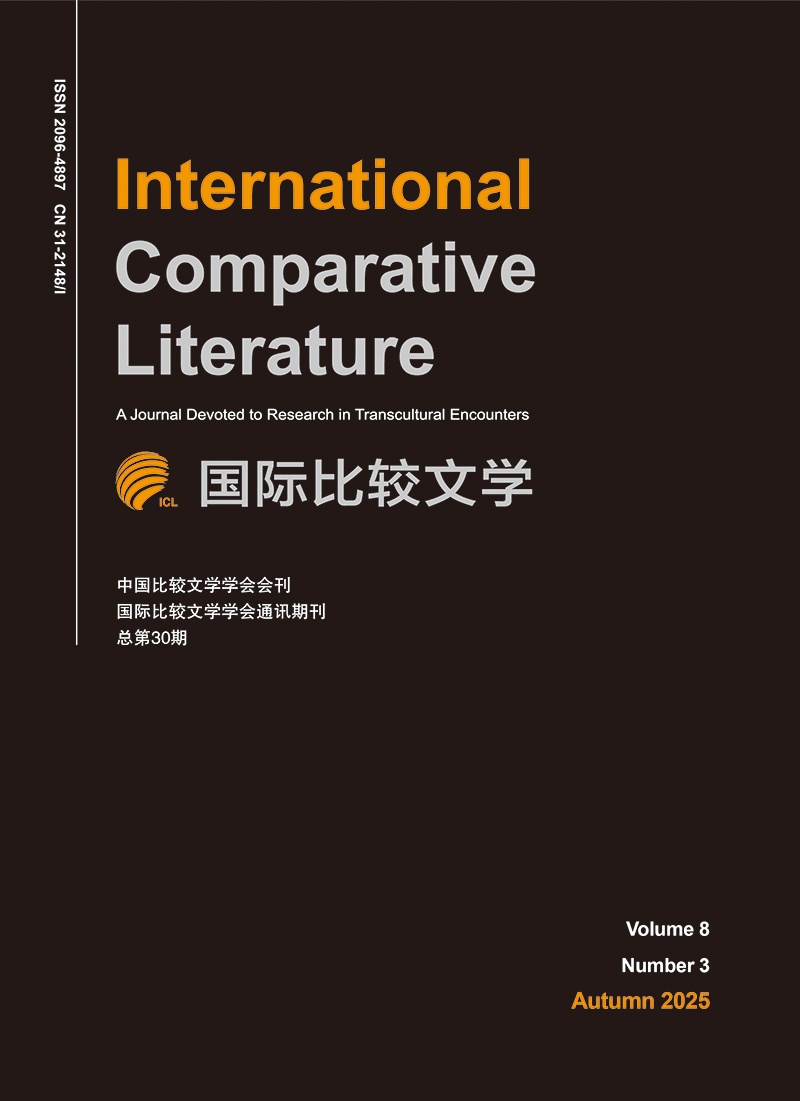|
[1]
|
Deleuze,Gilles.Différence et répétition.Paris:Presses Universitaires de France,1968.
|
|
[2]
|
——.L’I?le déserte et autres textes 1953-1974.Paris:Minuit,2002.
|
|
[3]
|
Deleuze,Gilles,and Félix Guattari.Mille plateaux.Paris:Minuit,1980.
|
|
[4]
|
Foucault,Michel.Les mots et les choses,Paris:Gallimard,1966.
|
|
[5]
|
Jullien,François.De l’Être au Vivre:Lexique euro-chinois de la pensée.Paris:Gallimard.
|
|
[6]
|
杜小真:《远去与归来——希腊与中国的对话》,北京:中国人民大学出版社,2004年。
|
|
[7]
|
[DU Xiaozhen.Yuanqu yu guilai:Xila yu Zhongguo de duihua (Dialogue entre la Grèce et la Chine).Beijing:China
|
|
[8]
|
Renmin University Press,2004.]
|
|
[9]
|
方维规主编:《思想与方法:全球化时代中西对话的可能》,北京:北京大学出版社,2014年。
|
|
[10]
|
[FANG Weigui.Sixiang yu fangfa:quanqiuhua shidai Zhong Xi duihua de keneng (Ideas and Methods:Possibilities of a
|
|
[11]
|
Chinese-Western Dialogue in a Globalized Age).Beijing:Beijing University Press,2014.]
|
|
[12]
|
朱利安:《从存有到生活:欧洲思想与中国思想的间距》,卓立译,上海:东方出版中心,2018年。
|
|
[13]
|
[Jullien,François.Cong cunyou dao shenghuo:Ouzhou sixiang yu Zhongguo sixiang de jianju (From Being to Living:
|
|
[14]
|
Euro-Chinese Thought Lexicon).Translated by ZHUO Li.Shanghai:Orient Publishing Center,2015.]
|
|
[15]
|
——:《间距与之间》,卓立、林志明译,台北:五南出版社,2013年。
|
|
[16]
|
[———.Jianju yu zhijian (L’écart et l’entre).Translated by ZHUO Li and LIN Zhiming.Taipei:Wu-Nan Book Company
|
|
[17]
|
Ltd.,2013.]
|
|
[18]
|
——:《大象无形》,张颖译,郑州:河南大学出版社,2017年。
|
|
[19]
|
[———.Daxiang wuxing (The Great Image Has No Form).Translated by ZHANG Ying.Zhengzhou:Henan University
|
|
[20]
|
Press,2017.]
|
|
[21]
|
———:如何思考中欧之间的对话》,张颖译,《国际汉学》,2009年第17期,第62页。
|
|
[22]
|
[———.“Ruhe sikao Zhong Ou zhijian de duihua”(How to Think about the Dialogue between China and Europe).
|
|
[23]
|
Translated by ZHANG Ying.Guoji hanxue (International Sinology)17(2009):62.]
|
|
[24]
|
商戈令:《“道通为一”新解》,《哲学研究》2004年第7期,第41-46页。
|
|
[25]
|
[SHANG Geling.“‘ Daotong weiyi’ xinjie”(New Lecture on“All Things by Means of the Dao are United and Became
|
|
[26]
|
One”).Zhexue yanjiu (Philosophical Researches)7(2004):41-46.]
|
|
[27]
|
———:《道通与间性》,《哲学分析》2012年第5期,第146-155页。
|
|
[28]
|
[———.“Daotong yu jianxing”(Daotong and Interality).Zhexue fenxi (Philosophical Analysis)5(2012):146-55.]
|
|
[29]
|
———:《间性论撮要》,《哲学分析》2015年第6期,第54-65页。
|
|
[30]
|
[———.“Jianxinglun cuoyao”(On Interalogy).Zhexue fenxi (Philosophical Analysis)6(2015):54-65.]
|
|
[31]
|
汪堂家:《汪堂家讲德里达》,北京:北京大学出版社,2008年。
|
|
[32]
|
[WANG Tangjia.Wang Tangjia jiang Delida (Wang Tangjia’s Lecture on Derrida).Beijing:Beijing University Press,2008.]
|

 点击查看大图
点击查看大图



 下载:
下载:

